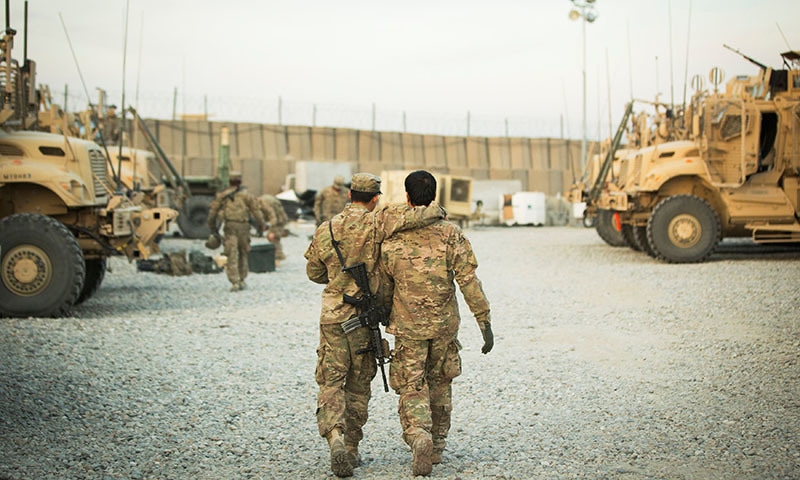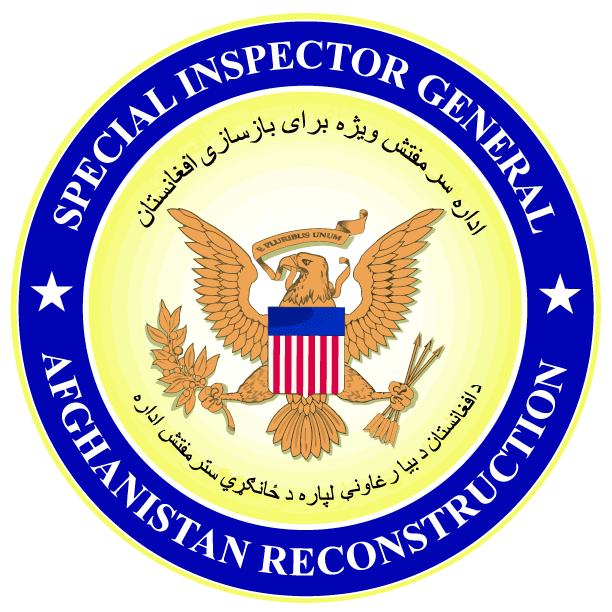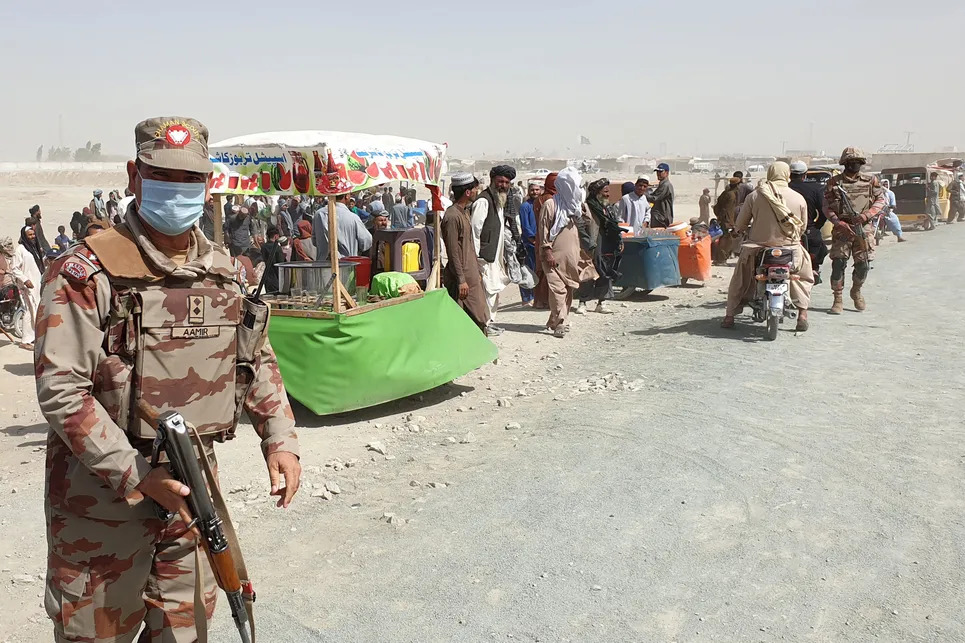Introduction
Whatever problem you may speak about or whatever arguments you may use to prove a stance, only facts can be the best solution in a discussion. Why? Because they are undeniable.
The Afghanistan intervention beginning with the War on Terror supplemented by the 2001 Operation Enduring Freedom has become the longest war in US history and for the Europeans, lasting longer than WWI and WWII combined. There is no doubt that the situation and developments in Afghanistan are far from being positive and as time goes by no significant changes are visible despite huge US military and financial efforts. American investment in Afghanistan worth billions to stabilize the country did not bring about any credible result. Why did this happen?
The geopolitical and geostrategic importance of Afghanistan had not only played an important role in shaping the existing economic priorities of the great powers but remained a fundamental driver in their foreign policy choices particularly of the United States of America. Even the contemporary wave of instability and insecurity of Afghanistan, that has been very much inflicted by the phenomenon of 9/11, also got its roots prior to the attack on World Trade Center. The Afghan regime that held most territory prior to 9/11 was that of the Taliban, although not recognized as a legitimate regime but were the active rulers of the land. The political discussions during the Bush administration strongly suggested that the country was very much involved in the geostrategic and geopolitical affairs of the Taliban territory. The fascinating question is, whether the US was interested to overthrow the Taliban regime or ready to invade the country for a political change suitable to their economic interests?
Scholars may disagree by giving alternative discourse to the whole narrative, such as arguing that the US interest as a State cannot be referred to the above question, whereas the interest of President Bush Jr could be the motivating factor to drive the American political and military machinery to serve the interests of a particular US oil cartel by invading Afghanistan. Whatsoever was the reason the fact remains that the President of the USA, whether looking after the State’s interest or the interests of any cartel, is the only powerful person that holds the responsibility of objectivity of foreign policy. Therefore, if any discussion related to change of regime or invasion of Afghanistan was under discussion in the policy circles of the USA, it gives at least an indication that the 9/11 phenomenon only served the purpose rather it provided a unique or challenging out of the box option to American national security establishment.

Afghanistan’s Tragic Nightmare and the Great Game of USA
The fact of the phenomenon of the Great Game is again connected to the political and military directions a state indicates through her foreign policy. American policy makers’ choices both at domestic and foreign fronts had remained an active indicator of their Great Game. For example, the US Government Foreign Policy Committee meeting held on February 12, 1998 clearly indicated the growing US interest to seek a pro-US political regime in Afghanistan.
The official report of the meeting records:
The U.S. Government’s position is that we support multiple pipelines…The Unocal pipeline is among those pipelines that would receive our support under that policy. I would caution that while we do support the project, the U.S. Government has not at this point recognized any governing regime of the transit country, one of the transit countries, Afghanistan, through which that pipeline would be routed. But we do support the project…The only other possible route [for the desired oil pipeline] is across, Afghanistan which has of course its own unique challenges…CentGas can not begin construction until an internationally recognized Afghanistan Government is in place.
[“U.S. Interests in the Central Asian Republics”, 12 Feb 1998”]1
The pipeline project was finally inked immediately after the Afghanistan invasion in May 2002. In validation to the above claim that America was very much interested in changing the Taliban regime, military action in Afghanistan seemed inevitable and 9/11 did provide the needed justification of change.2 Taking another argumentative route to Afghanistan invasion in 2002 other than the 9/11 plea, scholars can also find a series of events in the post February 1998 US Government Foreign Policy Committee Meeting and qualify whether ‘9/11’ was the motivation behind invasion of Afghanistan or other factors of interest like oil politics played decisive role to shape US priorities in Afghanistan. To mention some of US involvements in Afghanistan, the below mentioned details seems just a starter of the Great Game:
i. On November 3rd 1998, the US fired almost 80 cruise missiles in Afghanistan and Sudan.3
ii. On January 2nd 1999, the US launched strikes deep into Afghanistan against the so-called terrorist networks.4
iii. On March 15th 2001, the US led allies including India started collaborating with the Northern Alliance to invade Afghanistan.5
iv. On September 3rd 2001, US allies deployed huge task-force for fictional conflict drills costing nearly £100m. The drills were meant to operationally neutralize the fictional forces of the so-called state of ‘Alawham’, literally an invisible enemy.6
v. On September 11th 2001, the US extended foreign policy interest brought the war back at home and the 9/11 happened.
vi. On March 16th 2001, the US under the Bush administration constructed the objectivity of the war and prepared to permanently uphold American Great Game by waging an infamous war of terror.7
Whatever happened in the name of strategic gambling vested with strong economic interests of multibillion corporations, the time is gone and ahead of us is the turmoil and anarchy causing greater instability to Afghanistan and its surroundings. Dealing with the history of US great game at this stage is just like crying over spilt milk. Today, America and its allies who started the war on terror did promise their citizens in particular and to the rest of the world in general that the fate of Afghanistan would to become a stable country with justice, peace, and prosperity. The question is, Did that really happen? A situational analysis of Afghanistan can only answer that question.

Situational Analysis
The situational analysis of Afghanistan strongly advocates the unhappiness of the Afghans with the US invasion. The countrymen, especially the younger generation were very confident that the US led forces would liberate the country from Taliban and transfer the foundations of modern Afghanistan into their hands; this promise was never fulfilled. Here it would be important to mention that the countrymen and the young generation of Afghanistan never dreamt for a Western model of democracy, nor did they want to die for the so-called promises of the allied forces. Millions of Afghan became refugees despite having their own land, thousands were bombed in the name of democracy, thousands were mercilessly tortured and killed for keeping Islamic or Western ideologies close to their hearts under the phenomenon ‘either you are with us or against us’. The aftermath of all this only qualifies to further spillover anarchy as the last 15 years of war on terror has brought only ‘an unseen hope for the countrymen’. Given the scale of US financial and military investments, the quality of life has not improved but marginally shifted from Stone Age to under poverty of modern times. Why haven’t the billions of dollars in aid paved the way for a self-reliant Afghanistan?
Today, talking about the Taliban government that fell immediately after the 2001 invasion is considered irrelevant. What comes in the pretext of Taliban government is the commitment of the democratic forces of the world under US supervision. The commitments and the promises only reflect a story of a successful failures as Mohammad Tanha summarizes the phenomenon in his article ‘Afghanistan: A Story of Successful US Failures’. He explains that after the Taliban government fell, mega-sized construction projects, such as the Kabul-Kandahar road, renovations of government buildings, and the refurbishment of military and police offices became the norm. In reality, the flurry of activity favored over function, accomplishing very little. The military, private companies, and contractors spent most of the billions promised to rebuild Afghanistan. Foreign troops were the focus for nearly every dollar of aid.8
The United States tried to finish projects with the speed of light, regardless of quality and effectiveness. The NATO-assembled coalition selected “experts” from around the world to consult on aid projects, mostly from the ranks of middle-managers and the unemployed. Their only expertise: the ability to speak English. To get taxpayers on board with the campaign, the coalition countries invested in superficial projects irrelevant to post-war Afghanistan. The United States spent lavishly on stationary, seminars, meetings, bottled water, and leisure trips for mediocre Afghan officials who dined, drank, and gambled with some of the money allocated for aid. No one ever interrogated contractors, subcontractors, and government officials about the money.9
Relatively well-educated Afghans have bemoaned rampant corruption, with many abandoning government jobs to work with the United Nations, and a smattering of NGOs. That has allowed less-educated, corrupt officials to solidify their positions in government. Furthermore, the United States paid no attention to the growth of research centers, or affiliations between Afghan universities and research institutions with their Western counterparts, which spent funds on unnecessary trips and equipment. Despite that collaboration, only a handful of scholarships offer young Afghans the opportunity to pursue higher education in the West.10
The phenomenon of the US failures along with its European allies had remarkably constructed the reasons of their foreign policy downfall by identifying scapegoats. The word ‘scapegoat’ itself has an extensive explanation vested into it, therefore; I would not like to punish US policy makers by identifying their blunders that they have made to disrespect the sacrifices and human sufferings of a nation who stood side by side. What is a pity here was the slogan of ‘Do More’ by the Americans for a nation that has given more than 60,000 brave lives and above a US $100 billion setback to its national economy. The list of failures is long and the hope of happiness and pleasure is gone. Whatever is available to us is the plethora of questions that remain, which include:
Does the United States of America respect taxpayers money with such an immense failure in Afghanistan? Why has the U.S.-led forces failed to build a self-sustainable Afghanistan? Are the Taliban just as much of a threat as they were in 2001? Were democratic institutions established and citizens given a more equitable democratic role in decision-making? Were the tools for stabilizing the country such as a military, a police force, and a court system put in place? Are girls and women now allowed greater freedom and access to education? What has the intervention ultimately achieved? Has it been a success or a failure?
All these questions hold nothing as an answer but a definite strategic failure.

US Peace Efforts: Success or a Failure?
SIGAR (Special Inspector General for Afghanistan Reconstruction) quarterly issues reports to Congress about latest developments.11 It has clearly said that despite 113 billion dollars investments from 2001 – 2015 the social and economic situation in the country hasn’t produced any positive signs and continues to deteriorate. Only 20 out of 44 economy reconstruction projects were finished on time.
SIGAR inspectors also invite attention to:
– Controversial projects like “Taliban Reintegration Foundation” whose main goal was to help low-level Taliban fighters return to ordinary life and society, in fact directly provides financial support to terrorism;
– 7.6 billion dollars were granted to counter drug trafficking, however the statistics show the opposite effect: total amount of opium production in Afghanistan grows from 2.8 million tons (2012) to 3.3 million tons (2015);
– Huge amounts of donated money on building schools and hospitals are being stolen one way or another, because most of the construction projects are in the hands of governmental officials’ relatives;
– Due to Taliban increases its territorial influence it becomes more complicated to lead any infrastructural projects especially because the army gradually loses control over the distinct areas of the country;
The second sphere of concern SIGAR points out is the plan of establishing and maintaining Afghan National Army. 68 billion dollars were put directly into this utopic project but its combat efficiency until now remains considerably low while rate of desertion on the contrary – high. Military equipment and weapon thefts are still the sad reality of the ANA. Total activity of the army and Special Forces is decreasing.
According to the official numbers US contingent in Afghanistan accounts for 9800 servicemen. Most of them (6950) are busy with supporting Afghan army personnel in different ways and 2850 are directly taking part in military strike operations.
In spite of initial plans, Pentagon abandoned the idea of withdrawing its troops from Afghanistan. More than that – US called on its NATO allies to follow their example. Surprisingly on different press conferences US Defense secretary Ashton Carter repeatedly failed to provide comprehensive explanation about the reasons or true intentions of the White House.
Meanwhile the US has not even stopped the withdrawal of its troop but started expanding military capabilities in Afghanistan: we see Washington sending to Kabul new battle aircrafts, helicopters, intelligence equipment and troops as well. All this measures are taken without being widely covered by mass media, because the outgoing American president doesn’t need another failed and unfulfilled promise.
There is no doubt that Afghanistan in the same vein with Syria and Iraq will become an unpleasant legacy for the new administration. In these gloomy conditions the necessity to introduce a new peace talk in a new format arises including powerful key players. Until the Afghan conflict remains, drug trafficking and terrorism will remain the spreading disease for the whole region and far beyond.
By now, SIGAR has prepared five reports to Congress concerning 2016 developments in Afghanistan and none of them is positive. On the contrary each one is full of examples, details and proven facts pointing out that US policy in this country still brings disillusionment and mostly harms Afghanistan as well as its future.
In this regard many questions appear. One of them – what is this all for? Is this a part of a big game to destabilize the region or to prevent it from achieving developments, economic growth and prosperity by spreading the terroristic disease? Probably it’s just inability to bring peace to Afghanistan and wellbeing to neighboring countries particularly Pakistan.

Conclusion
Afghanistan today is a country that has survived more than 30 years of violence and war and has suffered multiple waves of displacement. Many people returning from exile to their country haven’t returned to their home villages or regions, but remain internally displaced. Many people in this war-ridden nation have no idea what it means to live in ‘peace’; many are traumatized and have been victims of violence and abuse. In short, everyone in Afghanistan has been affected by the US intervention and will be affected by the changes that the period of so-called political transformation brings to the country. The intervention has thoroughly and irreversibly changed Afghan society, beyond the changes to the structure and capacity of the state or its government.
The security situation of Afghanistan has become unpredictable as there is no political stability, what makes it even more challenging is its ability to affect the region negatively. The 15 years of continuous turmoil since the occupation of Afghanistan shaped the region from a land of opportunities to a territory of terrorism. The presence of the so-called US led International Security Assistance Force (ISAF) achieved nothing other than an established strategic failure. They have not only failed to contain their only opponent, the Taliban but also succeeded in making it into a heaven for emerging non-state actors like ISIS/Daesh.
The multifaceted layers of terrorist networks including clandestine state sponsored terrorism is the conclusion of the US “successful” military adventurism in Afghanistan. If that is to be considered the criteria of US peace success in Afghanistan than the world in general and the South Asian neighborhood in particular need not worry about the emergence of ISIS as it is the farewell gift of the US drawdown. Afghanistan as a land of proxy battles will offer new non-state actors an opportunity to expand the turmoil even beyond South Asia that would include the territories of China, Iran, Central Asian Republics and of course Russia. All that matters is how the new actors (like Pakistan, China, Iran, Central Asian Republics and Russia) can create an alliance to hold the pillars of peace, prosperity, and progress in Afghanistan.
End Notes
1 This is abstract of the question/answer communication taken from ‘The US Government Foreign Policy Committee Meeting Report,’ dated February 12, 1998. For more details please follow the online link: http://commdocs.house.gov/committees/intlrel/hfa48119.000/hfa48119_0.htm#33 (Accessed on October 17, 2016).
2 “Afghan pipeline given go-ahead,” BBC News, May 30, 2002. Available online at: http://news.bbc.co.uk/2/hi/business/2017044.stm (Accessed on October 17, 2016).
3 “US attack closes US project,” BBC News, November 3, 1998. Available online at: http://news.bbc.co.uk/2/hi/south_asia/207183.stm (Accessed on October 17, 2016)
4 “Afghanistan: Campaign of conflict,” BBC News, (January 2, 1999. Available online at: http://news.bbc.co.uk/2/hi/south_asia/241477.stm (Accessed on October 17, 2016).
5 “India joins anti-Taliban coalition”, Janes International Security News, 15 March 2001. http://www.janes.com/security/international_security/news/jir/jir010315_1_n.shtml (Accessed on October 17, 2016).
6 “Carrier heads for the Middle East,” BBC News, 3 September 2001. Available online at: http://news.bbc.co.uk/2/hi/uk_news/1522987.stm (Accessed on October 10, 2016)
7 “America widens ‘crusade’ on terror”, BBC News, 16 September 2001. Available online at: http://news.bbc.co.uk/2/hi/americas/1547561.stm (Accessed on October 10, 2016)
8 Mohammad Tanha, “Afghanistan: A Story of Successful US Failures,” the Diplomat. Available online at: http://thediplomat.com/2015/05/afghanistan-a-story-of-successful-us-failures/ (Accessed on October 16, 2016).
9 Ibid.
10 Ibid.
11 For detailed analysis of the Special Inspector General for Afghanistan Reconstruction (SIGAR) reports, please follow the link: https://www.sigar.mil/AllReports/ (Accessed on October 10, 2016)




